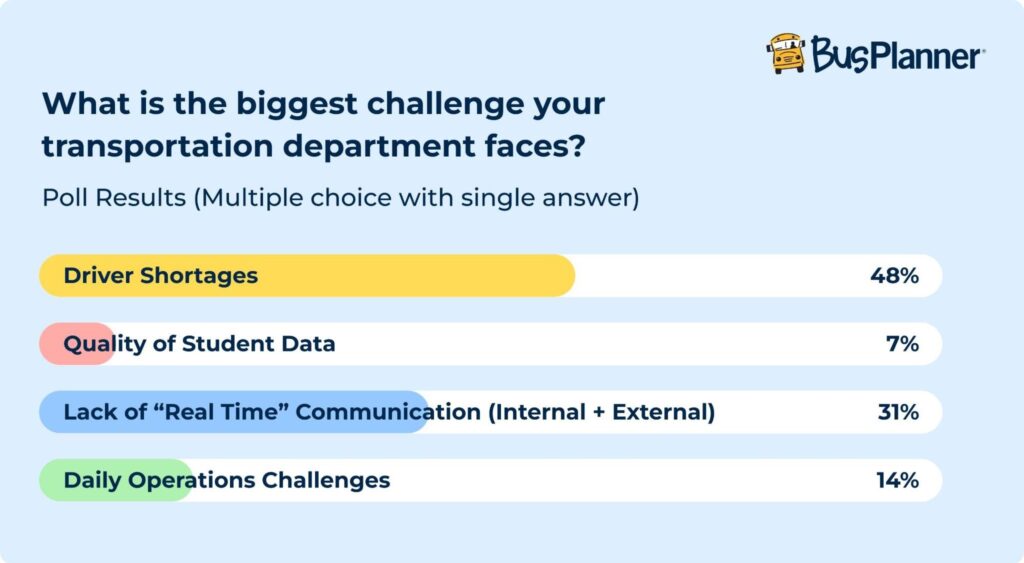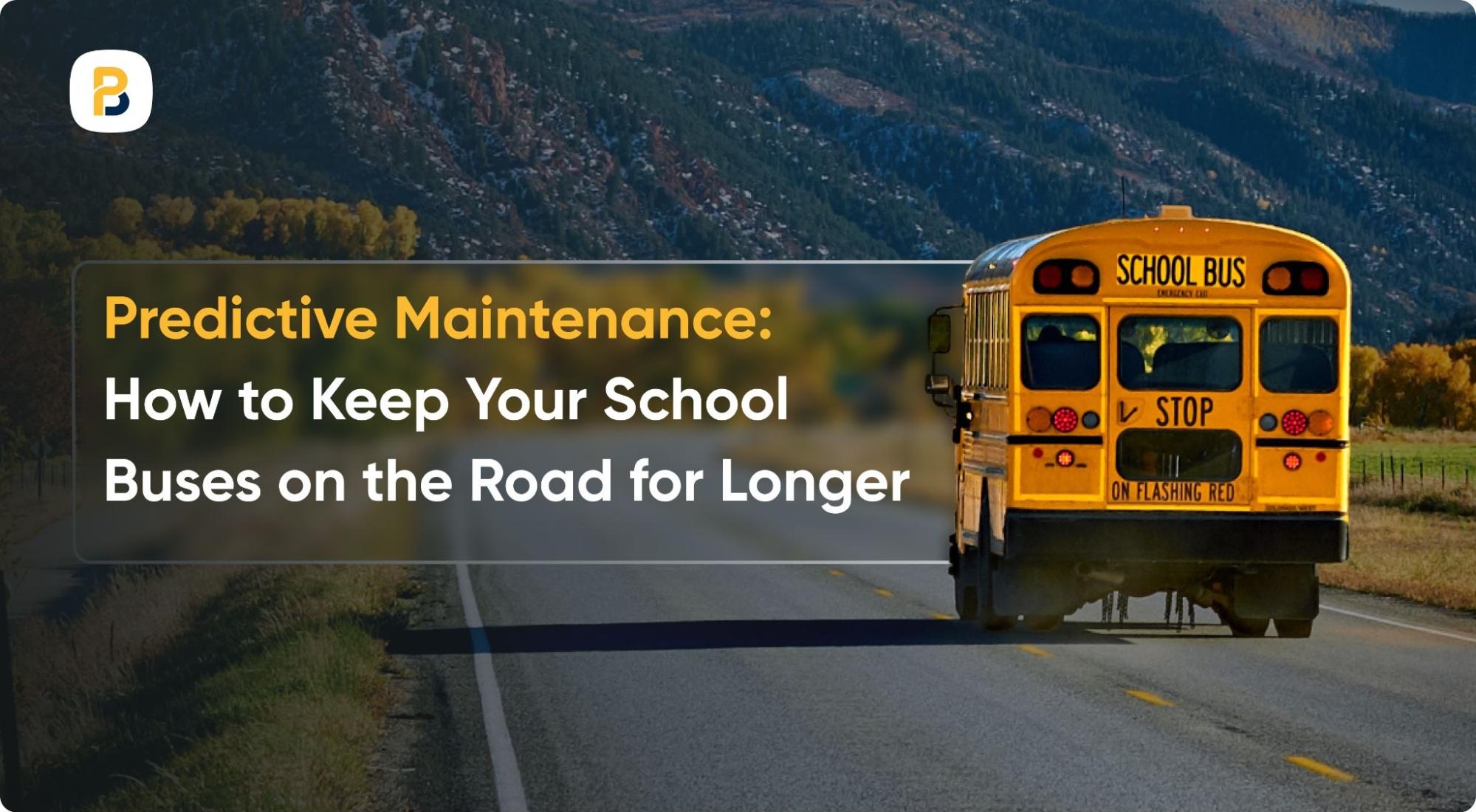Providing effective and efficient student transportation in rural school districts comes with unique challenges, such as geographic isolation, limited resources, and infrastructure constraints. This can significantly impact access to education and, hence, overall student well-being.
Here are some of the most common challenges in rural school bus transportation, along with potential solutions to address them:
Extended Bus Routes and Student Commute Times
In rural areas, students often reside far from educational institutions, leading to extended bus routes and longer commute times. A study found that rural students who rode the school bus had a longer commute time and distance compared to rural students who didn’t ride the bus.
Utilizing transportation management software enables districts to design efficient routes, minimizing student commute durations while also reducing operational costs.
Bus Driver Shortages

A significant issue impacting rural school transportation is the shortage of qualified bus drivers. According to a survey conducted in 2023, 65% of school transportation and administrative leaders are experiencing bus driver shortages.
Due to this shortage, districts often need to consolidate routes, increasing student commute times. This places additional strain on existing staff as well as on the students using school transportation to commute to school.
To deal with this challenge, the transportation department can do the following:
- Focus on Retention: Investing in driver training programs and creating a supportive work environment can enhance job satisfaction and retention.
- Enhance Resource Allocation: An advanced school transportation software can help districts make the most of their available drivers by optimizing routes and ensuring maximum coverage with fewer resources.
Infrastructure Limitations
Many rural areas struggle with economic hardships, smaller tax bases, and school district budgets, making it challenging to invest in infrastructure improvements. As a result, rural areas may lack the infrastructure necessary to support student transportation needs, such as well-maintained roads and fueling stations.
Poor road conditions can increase vehicle wear and tear, leading to higher maintenance costs. Rural school districts can navigate infrastructure challenges efficiently through:
- Live GPS Tracking and Route Adjustments: Implementing GPS tracking allows school districts to monitor bus locations in real time, ensuring they can quickly respond to unexpected delays and reroute buses as needed.
- Automated Alerts for Road Blockages: Communication systems or mobile apps can be used to send real-time notifications to drivers, parents, or school administration about road closures, construction, or severe weather conditions, informing them of possible delays. It would also allow drivers to take alternate routes to minimize disruptions.
Financial Constraints

Rural school districts often operate with limited budgets, making it difficult to maintain and upgrade transportation services.
Leveraging financial planning software can help rural school districts gain better control over transportation expenses and optimize resource allocation. With this software, you can:
- Compare Planned vs. Actual Costs: School administrators can track budgeted vs. actual expenses in real time, helping them identify cost overruns and adjust spending accordingly.
- Automate Daily Expense Logging: Instead of manually tracking fuel, maintenance, and labor costs, financial software automates expense recording, reducing administrative workload and human errors.
- Data-Driven Decision-Making: By analyzing spending patterns, districts can forecast future costs and explore cost-saving measures.
Conclusion
Transportation challenges in rural areas can lead to increased absenteeism. A study found that transportation limitations were the most frequent barrier to school attendance. Accordingly, it is vital for school districts in rural areas to implement a reliable and efficient transportation system.
Addressing the unique challenges of rural school bus transportation requires a multifaceted approach that includes strategic planning and investment in software and innovation.
To help you combat the challenges of student transportation, BusPlanner offers a suite of tools. Contact us to learn how you can utilize these tools to elevate transportation services in your district.







